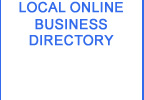Wednesday, September 9, 2015
Ten Suggestions For Improved Feeder Cattle Production And Marketing
Calvin Bryant/ Lawrence County Extension Director
Production of feeder calves is the primary beef production system in Tennessee and the Southeast and the greatest source of agricultural income. However, a large number of producers are “leaving money on the table” by taking the path of producing what is the easiest, marketing when it is the most convenient and taking whatever price is offered for their feeder cattle.
Following are proven ways Tennessee cow-calf producers can add value to their feeder cattle if they are carried out from a “total management” standpoint. This means that the practices are part of the management package and all need to be done.
1. Develop a marketing plan with 10 to 12 other producers in the area (a feeder cattle marketing alliance) that will result in the marketing of 50,000 lb. load lots of healthy, uniform feeder cattle. This cooperative effort needs to start 18-24 months before the proposed marketing date, and takes effort, cooperation and becoming a “team player.”
2. Develop a breeding program, similar to other members of the alliance, to produce feeder cattle that are uniform in genetic composition. Again, the target is 50,000 lb. loads of uniform feeder cattle. This program also should be in effect at least 18 months before marketing.
3. Select and use herd bulls to sire calves that will excel in production traits, gain, feed and efficiency as well as carcass traits, and that will meet the needs and be of value to the remaining sectors of the industry. These sires should be of the same genetic makeup as sires used by other producers in the feeder-cattle marketing alliance. This will help to develop genetic uniformity of the calf crop.
4. Develop and maintain a short calving season. This calving season should coincide with that of the other producers in the marketing alliance. This will aid in developing and maintaining uniformity in age and weight of the feeder cattle. It will also add to uniformity as to the time frame when the health and management practices can be implemented. This adds value to the cattle if the buyers are informed as to when the practices were done and the brand(s) of health products used.
5. Develop and carry out a uniform health and management program for the calf crop that includes weaning, bunk breaking and feeding for a period of 45 days. All producers in the alliance should follow the same program, such as the same animal health and feeding program. Uniformity in health practices is essential.
6. Carry-out those simple, time-proven, economically important practices such as castrating, dehorning, implanting, deworming and controlling flies. All of these add value to the feeder calves and all can be done more easily when a definite calving season is in place.
7. Become a Beef Quality Assurance (BQA)-certified producer. All producers of the alliance should be BQA-certified. Sale results demonstrate the positive effect of BQA certification on the price of feeder cattle when combined with the total package of marketing and production practices.
8. Guarantee all heifers open. This is so simple and easy to do. Also, guarantee that all “steers” are steers. Surgical castration assures “no bull” in both of these situations.
9. Provide source-verified information on health, previous management and genetics on the calf crop to buyers. Verify and stand behind it. The use of electronic identification would be an aid in verification.
10. Work with a professional, bonded marketing agency to aid in advertising, promoting and marketing as well as handling the sale, receiving and guaranteeing payment for the calves. A marketing agency can also help in weighing and loading out the cattle and resolving any weigh-up problems. This is important. The goal is to produce and market 50,000 lb. lots of uniform feeder cattle. Under Tennessee conditions, this will involve a cooperative effort of 10-12 producers that results in combining 250 cows. This would allow the putting together of 200 feeder calves that weigh 500 lbs. each. It is assumed that one-half would be steers and the other half heifers. This would also provide opportunity to “shape” up the load from a weight and quality standpoint and put together a load of valuable feeder





















